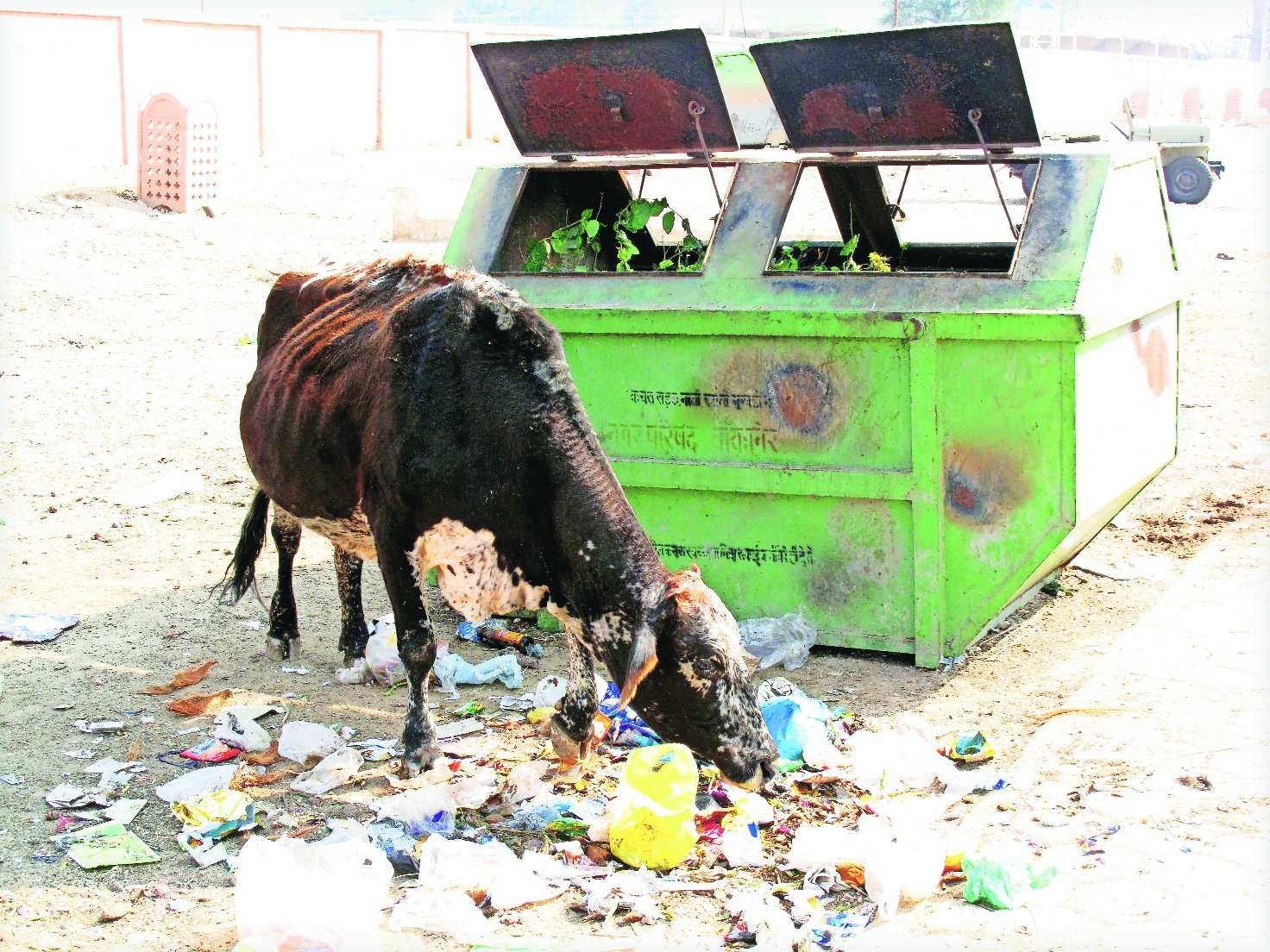‘Large-scale public awareness can solve issue of stray animals eating dumped garbage’
| Date :07-May-2025 |

By Vaishnavi Pillay :
Every day, heaps of unsegregated waste lie dumped along city roads, and every day, hundreds of stray dogs, cows, and bulls are seen rummaging through it. Animals unknowingly swallow plastic bags, leftover food, and hazardous waste, paying a heavy price for people’s carelessness.
‘The Hitavada’ spoke to city veterinarians Dr Vinod Dhoot, Professor and Head of the Department of Veterinary Medicine, Nagpur Veterinary College, and Dr Gauri Fiske, who raised concerns over the long-term health consequences for animals feeding on leftover food and plastic-laden garbage.
“People often throw leftover food outside in single-use plastic bags. Stray animals end up eating both the food and the plastic. Leftovers like chapatis and rice with high carbohydrates, when consumed in large quantities by dogs or cows, lead to acidic indigestion. In milk-producing animals, this also affects their milk production,” explained Dr Dhoot.
Dr Dhoot added that the accumulation of plastic in the stomachs of cattle is a major concern. “Polythene remains in the rumen for a long time, often until the animal dies. This leads to a condition called non-penetrating foreign body syndrome,” he noted.
Stray animals grazing near garbage piles face even more dangers. “Sometimes, while eating waste, they accidentally swallow sharp objects like needles, nails, or screws.
These objects can cause internal injuries and infections, especially in cattle,” Dr Dhoot warned.
Dr Fiske stated that the city’s growing waste problem, coupled with unchecked stray animal populations, is a matter of both policy implementation and citizen responsibility. The city lacks a firm regulation to manage open garbage dumping and enforce animal protection laws.
Dr Fiske highlighted another often-ignored aspect of urban waste mismanagement, the irresponsible disposal of sanitary products. “Many people throw used sanitary napkins and diapers in the open, without wrapping or proper disposal. Stray dogs often come in contact with these, and it is extremely harmful for them,” she said.
Drawing comparisons with other cities, Dr Fiske shared her observations from Pune, where waste management is more disciplined.
“In Pune, I have seen housing societies strictly segregate dry and wet waste before handing it over to the municipal sanitation vans.
The sanitation workers there simply refuse to accept unsegregated garbage, which forces people to follow the rules,” she noted.
Dr Fiske expressed disappointment at the lack of such enforcement in Nagpur. “Here, there is no consistency. Garbage collection vans are not regular, and even when people try to segregate waste, the sanitation workers mix it all again,” she said.
Recounting a personal experience, Dr Fiske mentioned confronting a woman from a well-maintained apartment complex who was openly dumping garbage in front of her building. “This is the problem. People want their homes clean but show no sense of belonging to their neighbourhood. They do not see garbage outside their homes as their problem,” she lamented.
Dr Dhoot added that while the Nagpur Municipal Corporation (NMC) does have sanitation and animal control departments, enforcement is inconsistent, and there is no large-scale public awareness campaign on how improper waste disposal is harmful for animals. He asserted that without creating a sense of civic responsibility among citizens, the situation is unlikely to improve.
Both Dr Dhoot and Dr Fiske stressed that this is not just an animal issue, but a societal
one.
They asserted that citizens can help by avoiding food waste and disposing leftovers responsibly, not throwing garbage in open spaces, and reporting injured or sick animals to local NGOs or authorities.